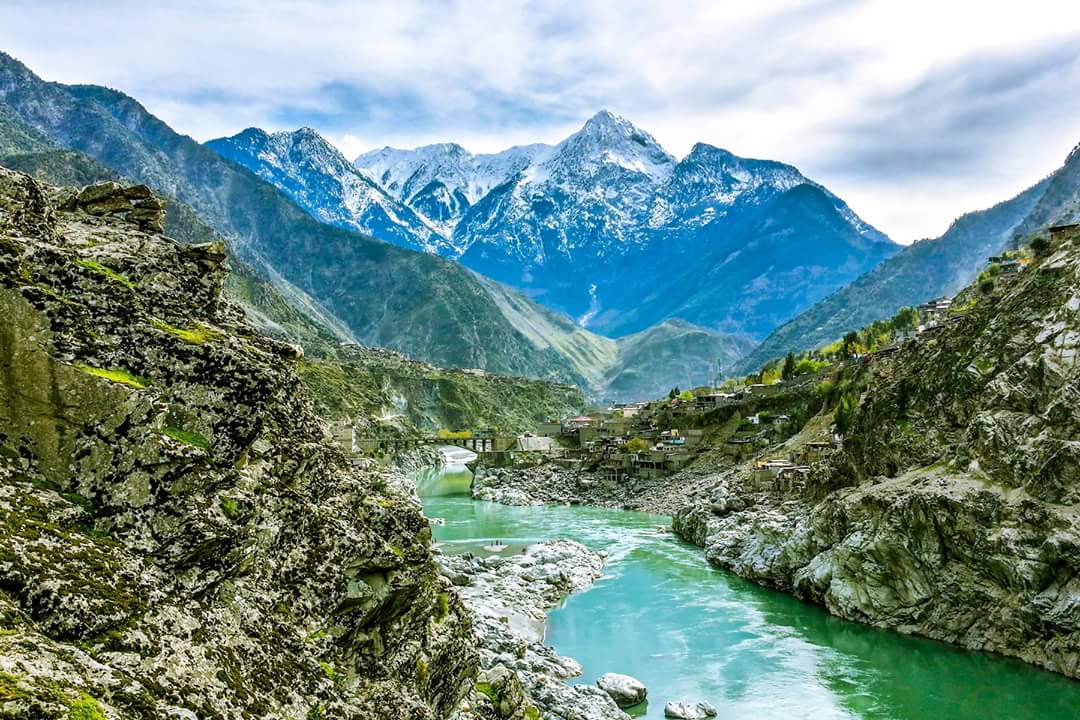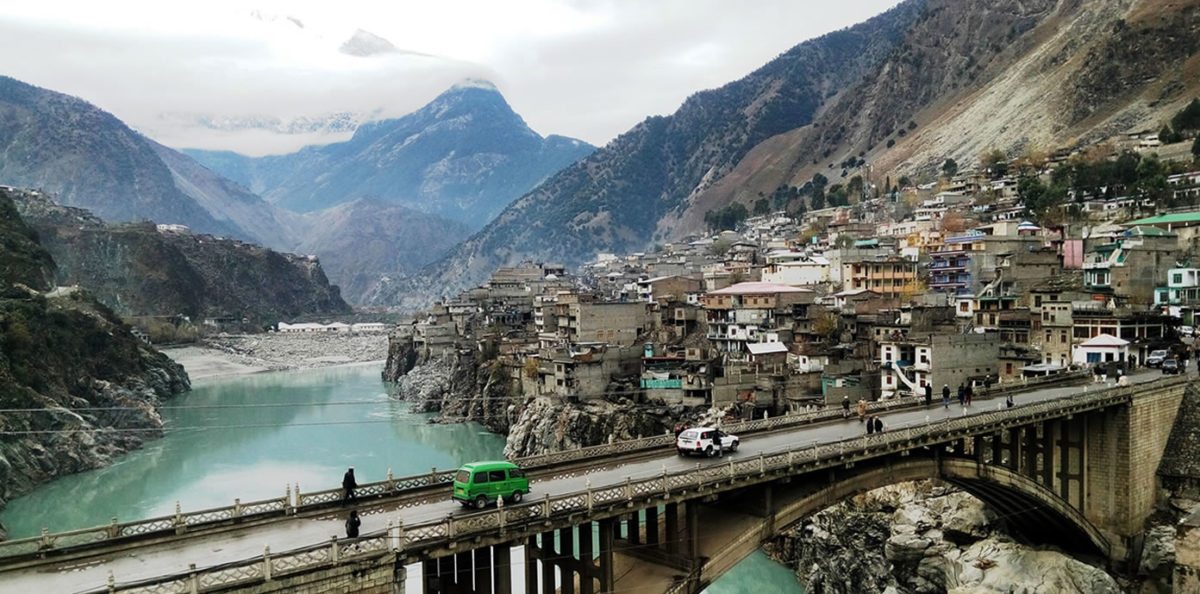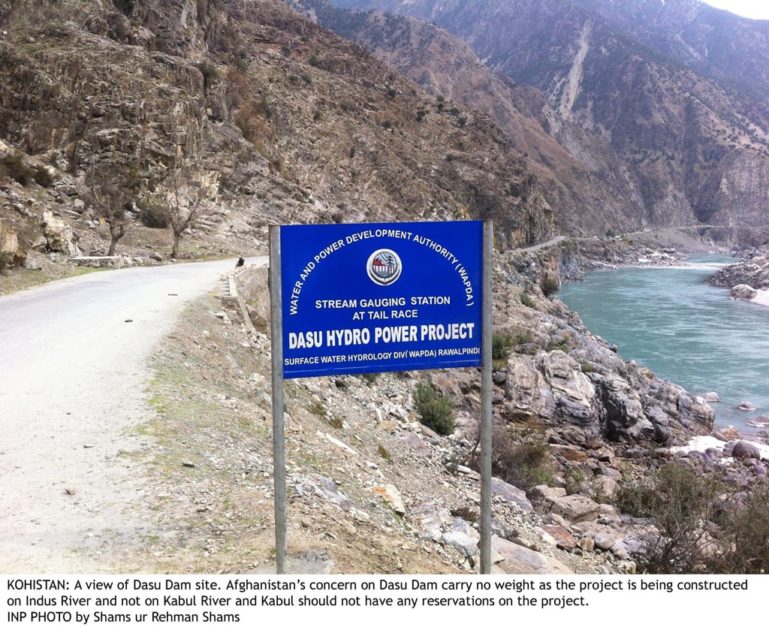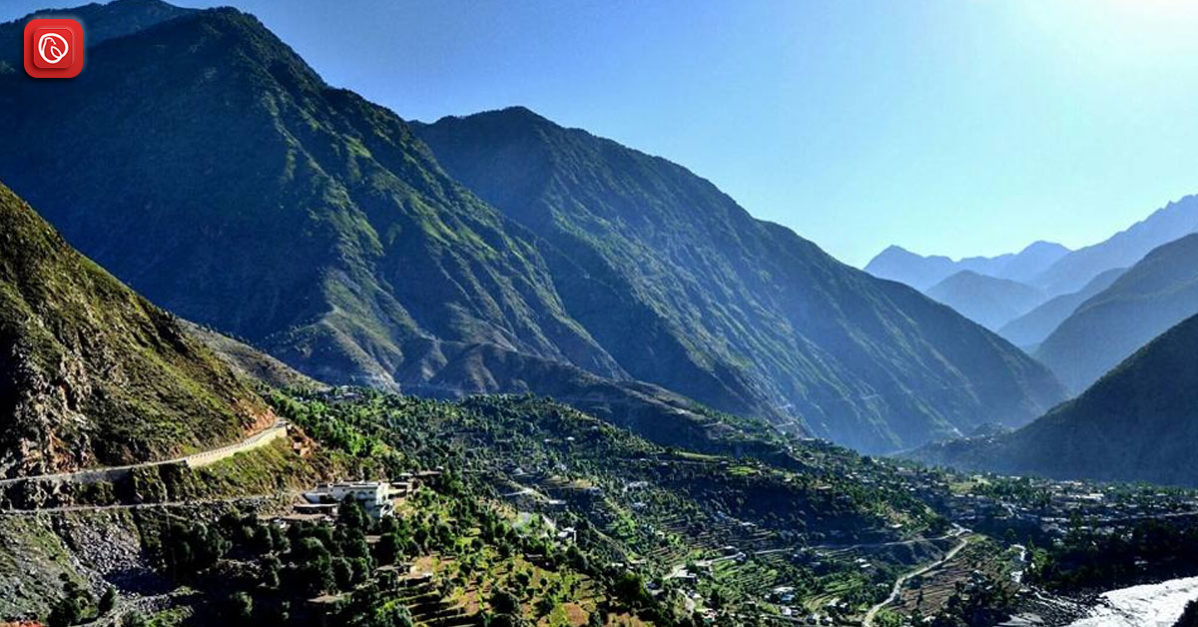Located at a strategic location, this district is referred to as the land of mountains. It is also known as Indus Kohistan. Located in the north of the Hazara Division in Khyber Pakhtunkhwa, Pakistan, Kohistan District has natural beauty and a rich cultural heritage.
Moreover, in 2014, this district was divided into two parts: Upper Kohistan and Lower Kohistan. With a population of over 510,000, the district stretches from GB to Mansehra. Home to a unique blend of languages, traditions, and landscapes, Kohistan offers a fascinating journey for those willing to explore its depths.
Let’s delve into the details of this captivating district and its tehsils with Graana.com.
Geography and Climate of Kohistan
Kohistan District is characterised by its rugged terrain, deep valleys, and towering peaks. It spans an area of approximately 7,492 square kilometres and features a mix of alpine and subalpine environments. The Indus River cuts through the district, enhancing its scenic beauty and providing vital water resources for the local population.
Moreover, the climate in Kohistan varies significantly with altitude. Lower areas experience a moderate climate, while higher regions can be quite harsh, with heavy snowfall in the winter. Summers are typically mild, making it an ideal time for trekking and exploring the natural landscape.

Administrative Divisions of Kohistan
Kohistan District is divided into several tehsils, each with its own unique characteristics and attractions. The primary administrative units include Dasu, Pattan, and Palas.
Dasu Tehsil
Dasu is the district headquarters and serves as the administrative and commercial hub of Kohistan. Located along the Karakoram Highway, it is a crucial point for travellers heading towards Gilgit-Baltistan. Dassu offers a glimpse into the local way of life, with bustling bazaars, traditional crafts, and a welcoming community.
Additionally, the Dasu Hydropower Project, one of Pakistan’s major infrastructure projects, is also located here. This project is expected to generate significant electricity and boost the local economy.
Pattan Tehsil
Pattan Tehsil is renowned for its breathtaking landscapes and vibrant cultural tapestry. It lies along the banks of the Indus River, providing numerous opportunities for outdoor activities such as fishing and hiking. The area is dotted with small villages where traditional lifestyles prevail, offering visitors a chance to experience the local customs and hospitality.
Pattan is also notable for its historical significance. The region has numerous ancient sites and rock carvings, reflecting the rich history of the area. These relics provide insight into the diverse civilisations that have inhabited Kohistan over the centuries.
Palas Tehsil
Palas Tehsil is perhaps the most isolated and pristine area within Kohistan. Known for its dense forests and diverse wildlife, Palas is a haven for nature enthusiasts. The Palas Valley is particularly famous for its conservation efforts, as it is home to the endangered Western Tragopan pheasant, a bird of significant ecological value.
Moreover, the remoteness of Palas has helped preserve its unique culture and traditions. The local population primarily engages in subsistence farming and animal husbandry, maintaining a lifestyle that has remained unchanged for generations. Visitors to Palas can immerse themselves in the tranquillity and natural beauty of the valley, far removed from the hustle and bustle of modern life.
Cultural Heritage
Kohistan’s cultural heritage is as diverse as its landscape. The district has several ethnic groups, each with its own language and customs. Kohistani, Shina, and Pashto are the predominant languages spoken here. The region’s cultural fabric is woven with traditional music, dance, and folklore, offering visitors a rich tapestry of experiences.
Conversely, the people of Kohistan are known for their hospitality and resilience. Despite the challenges posed by the region’s harsh terrain and climatic conditions, the local communities have managed to preserve their cultural identity and traditions.
Challenges and Opportunities
Kohistan faces several challenges, including limited infrastructure and a lack of educational facilities and healthcare services. The rugged terrain makes transportation and communication difficult, hindering development efforts. However, the region’s natural beauty and cultural richness offer significant potential for eco-tourism and sustainable development.
Also, investment in infrastructure, education, and healthcare could unlock Kohistan’s potential, improving the quality of life for its residents while preserving the region’s unique heritage and environment.

How to reach Kohistan?
Reaching Kohistan District, nestled in the mountainous region of Khyber Pakhtunkhwa, Pakistan, is an adventure in itself. This guide will provide you with detailed information on how to get to this captivating district, encompassing various modes of transport and the best routes to take.
By Road
Travelling by road is the most common way to reach Kohistan. The district is accessible via the Karakoram Highway (KKH), which is the primary route connecting the region to other parts of Pakistan.
From Islamabad to Kohistan:
- Islamabad to Abbottabad:
- Distance: Approximately 120 km.
- Route: Take the Hazara Motorway (E-35) from Islamabad to Abbottabad. Depending on traffic conditions, the journey takes about 2 to 3 hours.
- Transport Options: You can travel by car or bus, or hire a private taxi. Buses and vans frequently depart from Islamabad’s PirWadhai bus terminal.
- Abbottabad to Mansehra:
- Distance: Approximately 25 km.
- Route: From Abbottabad, continue on the Karakoram Highway towards Mansehra. This leg of the journey typically takes around 30 to 45 minutes.
- Transport Options: Buses and vans are readily available for this short trip.
- Mansehra to Besham:
- Distance: Approximately 100 km.
- Route: Continue on the Karakoram Highway from Mansehra to Besham. Due to the winding mountain roads, this section of the journey can take 2 to 3 hours.
- Transport Options: Regular bus and van services operate on this route, or you can opt for a private vehicle.
- Besham to Dassu (Kohistan):
- Distance: Approximately 120 km.
- Route: From Besham, stay on the Karakoram Highway, heading north towards Dassu, the district headquarters of Kohistan. This segment takes around 3 to 4 hours.
- Transport Options: Public transport options such as buses and vans are available, though hiring a private taxi may provide more comfort and flexibility.
Importance of Kohistan in CPEC
It is strategically important within the framework of the China-Pakistan Economic Corridor (CPEC). This ambitious project, part of China’s Belt and Road Initiative, aims to enhance connectivity and foster economic development between China and Pakistan. Kohistan’s role in CPEC is multifaceted and holds promise for both countries in various sectors. Let’s explore the significance of Kohistan in CPEC.
Geographical Location
Kohistan’s geographical location along the Karakoram Highway (KKH) places it at a pivotal juncture within the CPEC infrastructure network. The KKH is a vital artery linking China’s western provinces to Pakistan’s deep-sea port of Gwadar, facilitating trade and commerce between the two nations. As a transit point along this critical route, Kohistan is crucial in ensuring smooth connectivity and logistics management.
Energy Infrastructure
Kohistan boasts significant potential for hydropower generation, making it an integral part of CPEC’s energy projects. The district is home to several rivers and streams, offering ideal conditions for the development of hydroelectric power plants.
The Dasu Hydropower Project in Kohistan is one such venture under CPEC aimed at harnessing the region’s hydropower potential to meet Pakistan’s growing energy needs. Once operational, these projects will contribute to Pakistan’s energy security and help alleviate power shortages.
Economic Development
CPEC presents a unique opportunity for Kohistan to unlock its economic potential and improve the livelihoods of its residents. Infrastructure development under the initiative, including road networks, bridges, and communication systems, will enhance accessibility to and within Kohistan.
Moreover, improved connectivity will facilitate the movement of goods and services and promote tourism and investment in the region. Additionally, the construction phase of CPEC projects in Kohistan will create job opportunities and stimulate economic growth, thereby uplifting local communities.
Strategic Importance
Beyond its economic significance, Kohistan holds strategic importance within the broader geopolitical landscape of CPEC. The district’s proximity to the China-Pakistan border and its location along key transportation routes underscore its strategic value.
Additionally, as CPEC strengthens bilateral ties between China and Pakistan, Kohistan’s role in facilitating trade and connectivity becomes increasingly critical. Moreover, the district’s rugged terrain presents engineering challenges that necessitate innovative solutions, showcasing Pakistan’s capability to overcome obstacles and deliver on its commitments under CPEC.
Environmental Considerations
While the development associated with CPEC brings opportunities for Kohistan, it also raises concerns about environmental conservation. The district’s pristine natural beauty and biodiversity must be safeguarded while implementing infrastructure projects. Sustainable practices and environmental impact assessments are essential to mitigate any adverse effects on ecosystems and local communities.

Conclusion
Kohistan District has stunning natural beauty, rich cultural heritage, and resilient communities. Its tehsils, Dassu, Pattan, and Palas, each offer unique experiences, from bustling markets and historical sites to serene valleys and conservation areas.
Conversely, despite its challenges, Kohistan holds immense potential for those who venture into its mountainous embrace. Whether you’re an adventurer, a historian, or a cultural enthusiast, Kohistan is sure to leave an indelible mark on your heart.
Frequently Asked Questions
Some of the most asked questions about the district:
1. Where is Kohistan located?
Kohistan is a district located in the Khyber Pakhtunkhwa province of Pakistan.
2. What is the meaning of “Kohistan”?
“Kohistan” translates to “Land of Mountains” in the local language. The name aptly describes the rugged and mountainous terrain that characterises the district.
3. What are the main languages spoken in Kohistan?
The predominant languages spoken in Kohistan are Kohistani, Shina, and Pashto. These languages reflect the diverse ethnic and cultural makeup of the region.
4. What are the major towns or tehsils in Kohistan?
Some of the major towns or tehsils in Kohistan include Dasu, Pattan, and Palas. These administrative units serve as hubs for commerce, culture, and governance within the district.
5. What are the main tourist attractions in Kohistan?
Kohistan boasts a variety of tourist attractions, including scenic valleys like Palas Valley, historical sites such as Shatial Rock Carvings, bustling bazaars like Dassu Bazaar, and natural wonders like the Indus River.
6. How can I reach Kohistan?
Kohistan is accessible by road, primarily via the Karakoram Highway (KKH) from major cities like Islamabad. Additionally, air travel to Islamabad followed by road transport is another option for reaching Kohistan.
7. What is the climate like in Kohistan?
Kohistan experiences a varied climate, with moderate temperatures in lower areas and colder conditions in higher elevations. Summers are generally mild, while winters can bring heavy snowfall to the mountainous regions.
8. Are there any conservation efforts in Kohistan?
Yes, the district is home to conservation efforts to preserve its natural beauty and biodiversity. For example, the Palas Valley is known for its conservation initiatives to protect the endangered Western Tragopan pheasant.
9. What are the economic activities in Kohistan?
Economic activities in Kohistan primarily revolve around agriculture, livestock farming, and small-scale industries. Additionally, hydropower generation is emerging as a significant economic opportunity for the district.
10. Is Kohistan safe for tourists?
The district is considered safe for tourists, but like any travel destination, visitors should exercise caution and respect local customs and traditions. It is advisable to travel with a guide, especially when exploring remote areas or engaging in outdoor activities.
For more details, visit Graana blog.




